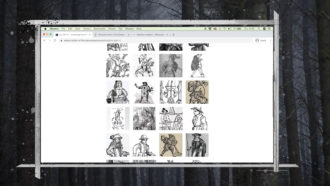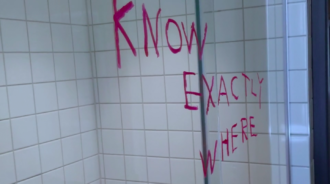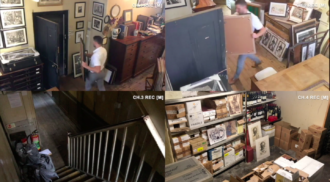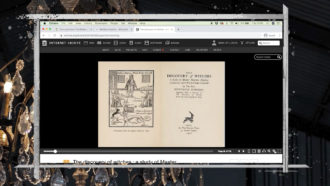Escape Rooms have been one of my favourite pastimes for years now, taking my love of puzzles and planting me into a real world scenario that my friends and I must solve within an hour. They vary in quality, with some that I’ve done being excellent and others clearly cashing in on a trend. Still, they make for a fun night out (albeit a little bit expensive, with most rooms around $150 or more for a group of people). The pandemic has changed how Escape Rooms function, in the sense that they all shut down for a long period of time; we’ve seen over the years tabletop board game versions increase in popularity too, a “one and done” box of puzzles and tricks. But I’ve never done anything quite like Isklander, a series of online Escape Rooms that are heavy on narrative, from talented creators Swamp Motel.
Isklander is a cooperative puzzle game that takes place in your internet browser. It’s described as “part puzzle game, part online scavenger hunt, part immersive theatre”, and it lives up to this claim. With three parts available to play (separately or as part of a trilogy for maximum narrative impact), they make for a fun at-home adventure. And while lockdowns have mostly lifted and restrictions eased, there’s something still quite comforting about being able to log on at home for an online collaborative puzzle game. We are gamers first and foremost, after all.
The first chapter, Plymouth Point, is a great introduction to the kind of experience you’re about to take part in. Upon joining a virtual call with your teammates (up to 6 of you, which can be a combination of people in one location or multiple, depending on your setup), a video call of sorts kicks off with an elderly woman, who advises that she is worried about her neighbour, Ivy. Cleverly, the call quality isn’t the best, just like real life (thanks, NBN!). She fumbles with her camera, and there is a bit of lag (which, if you’re like me and have been working from home for most of the last year, you’d be very used to).
Once she turns her camera off, it’s on with the quest; all three chapters of the story start similarly, with a video call that sets up the events to come, usually with key information being divulged. If you miss it though, a character in the chat will ask questions to lead you in the right direction, such as, “Did you try checking Ivy’s Facebook page?” for example, or “Did you see where her job is based? Should we look there?”. That’s where the scavenger hunt component comes into play. Before you know it, you’ll be scouring the internet for company websites, social media pages on Facebook and Instagram, and more.
Where Isklander does a fantastic job of suspending your disbelief is that it combines legitimate real world things you’d find on the internet with a bunch of content that has been specifically crafted for the experience; but, that content looks so realistic that we were constantly questioning what was real and what was fabricated. Company websites have employee portals, promotional videos of the work they do, profiles of their CEOs and so on. Facebook and Instagram pages for the characters in Isklander exist, and hold important clues. At one point, coordinates are shared that once typed in, lead you to a visual in the real world via street view.
The blending of real and fabricated means that the puzzles themselves cleverly use our real world knowledge in how we search the internet for information in our day-to-day lives. Looking for a restaurant location? How about a piece of research from an online education catalogue? What kinds of things would a person incorporate into their email password? As you solve more puzzles and uncover more of the mystery, there are some interesting surprises along the way; while it won’t blow your mind, the team have crafted a fun little adventure full of intrigue, linking to real world lore about The Mermaid’s Tongue and a centuries-old conspiracy surrounding it.
There’s decent variety in the puzzles as well. The first episode is a bit lighter in terms of ingenuity, with a variety of passwords that must be searched for in different ways; perhaps it’s designed as an easier entry-level game for newbies, as it was really the second and third episode where things became super interesting. Combing through old texts, cracking codes with imagery, searching real world locations and piecing together video fragments, we couldn’t help but feel like online investigators working against the clock, with “video calls” interjecting at certain points from the actors, that balance just the right amount of serious and campy to make it an entertaining, memorable experience.
“The production values are really top notch across the board…”
It’s advised that one player should share their screen so that you can all see what’s going on together, as you, for example, try to figure out a password to somebody’s email to check for important information. However, we found it helpful to all look at our own pace on our various devices, which made it easier to divide and conquer (look, we’re a bit competitive). But the amount of time given for each session means you’ll likely not run out the clock, even if you do take your time. Additionally, the hint prompts come through in the chat if you’re stuck on something a bit too long. I think they maybe came on a bit strong with the hints and as Escape Room veterans we would have liked a little less hand-holding, but they’re relatively easy to ignore if you choose.
The production values are really top notch across the board, too; whether it’s the commitment from the cast (including some well-known faces like Dominic Monaghan from Lord of the Rings and Lost), the creation of these online puzzles, or the “fake” systems you have to interact with (including one that is DOS-like in nature, complete with hidden command prompts), it’s all very immersive and well done; there were points we forgot we were playing a game, genuinely discovering secrets like we were hackers as we navigated the adventure with just our mouse, keyboard and wits. Like all of these things though, it’s best enjoyed if you commit fully. Go along for the ride and suspend your disbelief a little, and you’ll be in for a fun evening with friends that warranted a post-game discussion on each night, chatting about the twists and turns and discussing what we think will happen in the next episode.

When it comes to an activity for a “night in”, Isklander is actually a fairly large success. You can do all three back-to-back if you’re feeling really keen, but my friends and I decided to space it out one week at a time, with the third chapter bringing everything together in a satisfying manner (complete with “PREVIOUSLY ON ISKLANDER…” to set the tone).
For $100 per game for 6 people, but $220 if you purchase all three games, it’s pretty decent value all things considered (around $12 per game). Certainly cheaper than an Escape Room in person, and completable from the comfort of your own couch. Much like the lockdown Zoom meetings we’ve all been to over the last year, you don’t even need to wear pants, technically.
As a group of Escape Room lovers, we found it quite enjoyable for something a little bit different; virtual experiences like this may have been a trend born out of the pandemic, but if Isklander is any indication, they’re here to stay – and that’s a good thing.
To book in a session (or three) of Isklander, head here.
A big thank you to the Isklander team for allowing us the opportunity to check out the experiences for Checkpoint Gaming.











